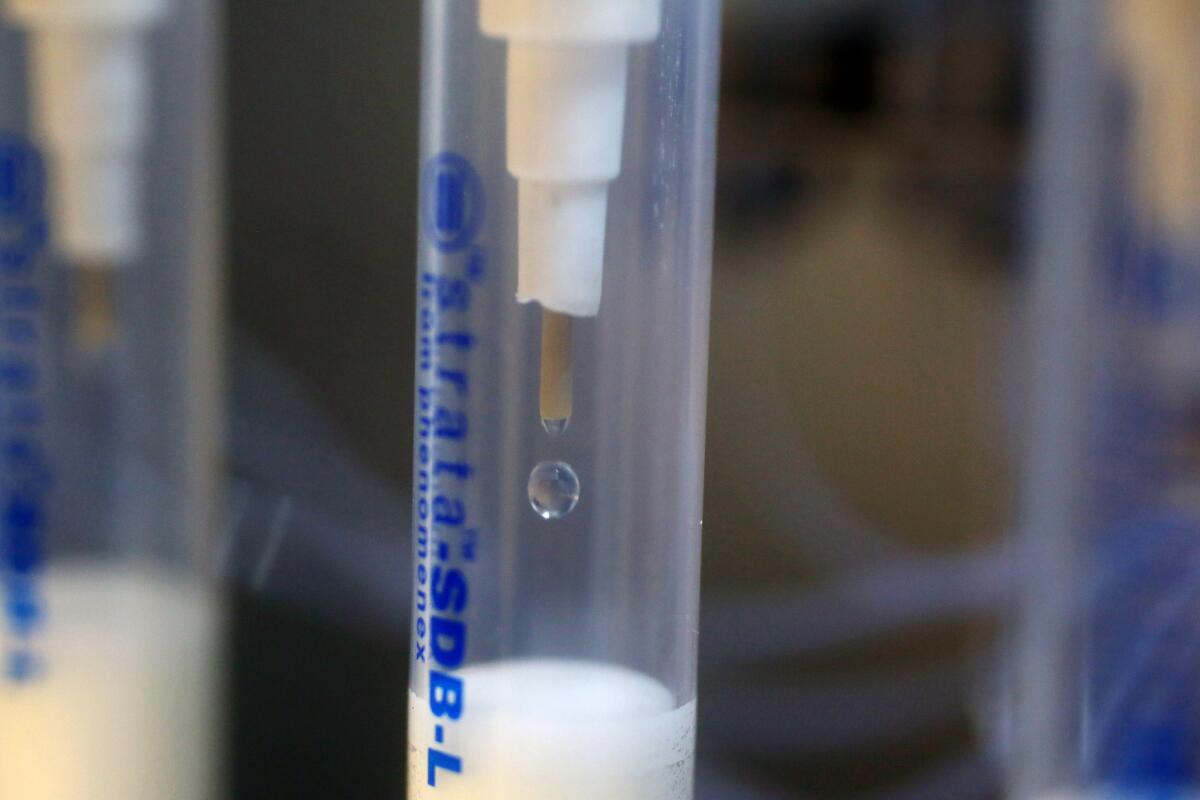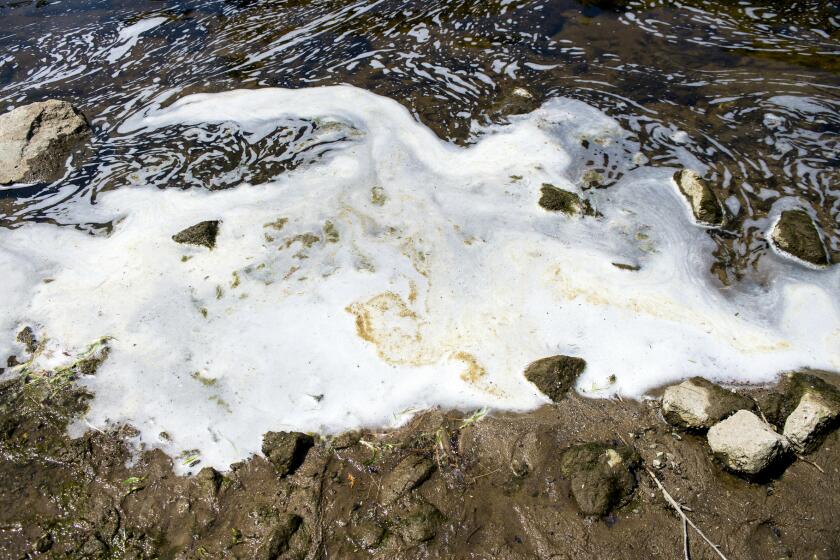Editorial: Get the ‘forever chemicals’ out of our drinking water

A recent study by the U.S. Geological Survey found that nearly half of the drinking water in the United States is contaminated with “forever chemicals,” the per- and polyfluoroakyl substances known as PFAS that can cause cancer and other health complications. And Southern California is among a handful of regions nationwide with a higher probability of tap water contaminated with PFAS.
These findings are worrisome, particularly for communities that are already suffering from other sources of pollution. In Los Angeles County, water agencies in cities such as Commerce, Montebello, Monterey Park, Vernon, Downey were found to have PFAS higher than the recommended levels as early as 2019.
Los Angeles County supervisors this week launched an effort to assess the full extent of PFAS contamination in drinking water supplies. It’s a good first step, but state and local authorities must do more to ensure drinking water is free of these chemicals, which are found in many household products, including cookware and cosmetics.
PFAS or “forever chemicals” break down slowly in the environment and have been linked to several negative health effects. It’s good that the U.S. EPA is taking steps to regulate them, as California has done.
PFAS were first classified as an “emerging contaminant” by the U.S. Environmental Protection Agency in 2016. But little is known about any disparities of PFAS contamination in different ethnic communities or the specific harms this pollution may be inflicting on these communities.
Last month, researchers at the University of Southern California began a new study on the health effects of PFAS contamination in drinking water in Los Angeles County, focusing on the predominantly Latino communities in the east and southeast that are overburdened with environmental pollution. The multidisciplinary study, which involves researchers from USC’s medical and engineering schools, aims to develop prevention strategies and large-scale, sustainable remediation solutions that can be implemented in a cost-effective manner.
Lead researcher Lida Chatzi, director of USC’s Center for Translational Research on Environmental Health, said previous research has linked exposure to PFAS to nonalcoholic fatty liver disease and metabolic disorders. Other research she has conducted found that a mixture of PFAS can cause the disruption of critical biological processes in youth, increasing the risk of cardiovascular and metabolic diseases, developmental disorders and many types of cancer. In the latest study, scientists will study the effect of newer PFAS that have been created to replace those found to be harmful.
California’s commitment to spend $67 million to clean toxic Exide parkways is good. But the Newsom administration and Legislature need a cleanup done well.
Federal officials have long known that PFAS, which have been detected in the blood of humans and animals, have been linked to many negative health effects and are found in thousands of commercial and industrial products such as nonstick cooking pans, water-repellent outerwear, non-stain food packaging, firefighting foam and many more.
However, government action has been sluggish and too narrowly focused. The Biden administration has proposed the first national drinking water standards for six PFAS, but there are more than 12,000 types.
California has recently banned the use of PFAS in many products, such as cosmetics, clothes, food packaging, cribs and firefighting foam. This year, state lawmakers are considering legislation that would ban the chemicals in products such as artificial turf and menstrual underwear, pads, tampons and other items. These moves may lower our exposure to PFAS, but scientists say this is not enough. Contamination of PFAS is so widespread it requires action from multiple government agencies to regulate PFAS levels in water systems, implement large-scale removal of existing PFAS and prevent future contamination.
The Los Angeles Times reviewed hundreds of pages of Pentagon documents and found California has more bases contaminated with the chemicals, known as PFAS, than any other state — at least 21 that exceed federal health guidelines.
Their persistent toxicity may add an extremely dangerous layer of pollution if detected in communities already struggling with environmental damage, such as those in southeast Los Angeles County. The Biden administration‘s plan to tackle PFAS contamination includes a grant program for disadvantaged neighborhoods, but the burden for initiating remediation should not fall on these communities.
Each new study on PFAS has only uncovered more evidence of their omnipresence in our lives. This means that federal regulators should consider banning all PFAS as a class, as recommended by many scientists. More research is needed to assess the full range of harmful effects and to find sustainable ways to remove these toxins from drinking water. This will be particularly important as California and other states consider reusing wastewater to help replenish groundwater supplies, a move scientists believe will increase PFAS toxicity in our water.
The findings of the USGS study were not entirely surprising, but they should not be ignored.
More to Read
A cure for the common opinion
Get thought-provoking perspectives with our weekly newsletter.
You may occasionally receive promotional content from the Los Angeles Times.













